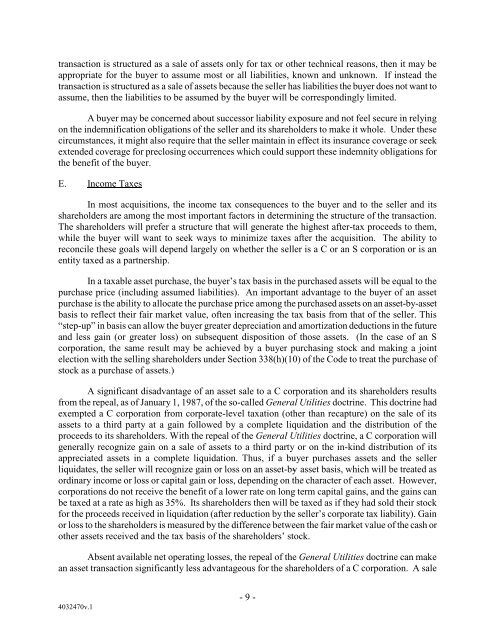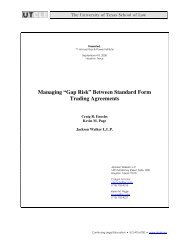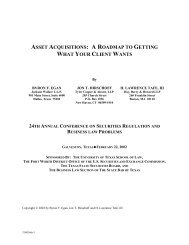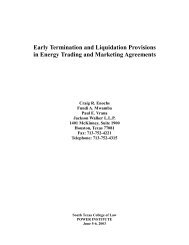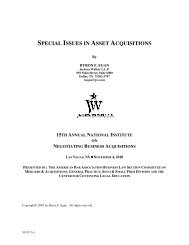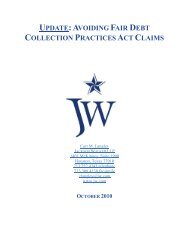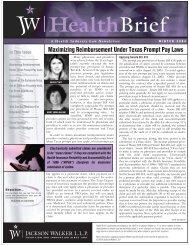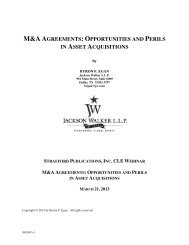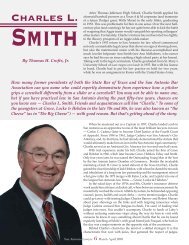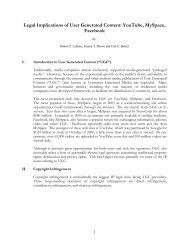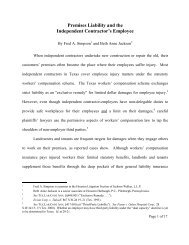busted m&a deals headed for litigation - Jackson Walker LLP
busted m&a deals headed for litigation - Jackson Walker LLP
busted m&a deals headed for litigation - Jackson Walker LLP
You also want an ePaper? Increase the reach of your titles
YUMPU automatically turns print PDFs into web optimized ePapers that Google loves.
transaction is structured as a sale of assets only <strong>for</strong> tax or other technical reasons, then it may be<br />
appropriate <strong>for</strong> the buyer to assume most or all liabilities, known and unknown. If instead the<br />
transaction is structured as a sale of assets because the seller has liabilities the buyer does not want to<br />
assume, then the liabilities to be assumed by the buyer will be correspondingly limited.<br />
A buyer may be concerned about successor liability exposure and not feel secure in relying<br />
on the indemnification obligations of the seller and its shareholders to make it whole. Under these<br />
circumstances, it might also require that the seller maintain in effect its insurance coverage or seek<br />
extended coverage <strong>for</strong> preclosing occurrences which could support these indemnity obligations <strong>for</strong><br />
the benefit of the buyer.<br />
E. Income Taxes<br />
In most acquisitions, the income tax consequences to the buyer and to the seller and its<br />
shareholders are among the most important factors in determining the structure of the transaction.<br />
The shareholders will prefer a structure that will generate the highest after-tax proceeds to them,<br />
while the buyer will want to seek ways to minimize taxes after the acquisition. The ability to<br />
reconcile these goals will depend largely on whether the seller is a C or an S corporation or is an<br />
entity taxed as a partnership.<br />
In a taxable asset purchase, the buyer’s tax basis in the purchased assets will be equal to the<br />
purchase price (including assumed liabilities). An important advantage to the buyer of an asset<br />
purchase is the ability to allocate the purchase price among the purchased assets on an asset-by-asset<br />
basis to reflect their fair market value, often increasing the tax basis from that of the seller. This<br />
“step-up” in basis can allow the buyer greater depreciation and amortization deductions in the future<br />
and less gain (or greater loss) on subsequent disposition of those assets. (In the case of an S<br />
corporation, the same result may be achieved by a buyer purchasing stock and making a joint<br />
election with the selling shareholders under Section 338(h)(10) of the Code to treat the purchase of<br />
stock as a purchase of assets.)<br />
A significant disadvantage of an asset sale to a C corporation and its shareholders results<br />
from the repeal, as of January 1, 1987, of the so-called General Utilities doctrine. This doctrine had<br />
exempted a C corporation from corporate-level taxation (other than recapture) on the sale of its<br />
assets to a third party at a gain followed by a complete liquidation and the distribution of the<br />
proceeds to its shareholders. With the repeal of the General Utilities doctrine, a C corporation will<br />
generally recognize gain on a sale of assets to a third party or on the in-kind distribution of its<br />
appreciated assets in a complete liquidation. Thus, if a buyer purchases assets and the seller<br />
liquidates, the seller will recognize gain or loss on an asset-by- asset basis, which will be treated as<br />
ordinary income or loss or capital gain or loss, depending on the character of each asset. However,<br />
corporations do not receive the benefit of a lower rate on long term capital gains, and the gains can<br />
be taxed at a rate as high as 35%. Its shareholders then will be taxed as if they had sold their stock<br />
<strong>for</strong> the proceeds received in liquidation (after reduction by the seller’s corporate tax liability). Gain<br />
or loss to the shareholders is measured by the difference between the fair market value of the cash or<br />
other assets received and the tax basis of the shareholders’ stock.<br />
Absent available net operating losses, the repeal of the General Utilities doctrine can make<br />
an asset transaction significantly less advantageous <strong>for</strong> the shareholders of a C corporation. A sale<br />
4032470v.1<br />
- 9 -


